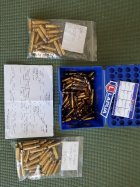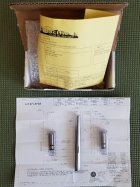Just reamed a chamber with PTG "off the shelf" reamer. Neck .273, FB .118, .200 Datum .472, shoulder .458, chamber length 1.860.
Called Peterson and they said their loaded neck OD is .274. I'm not turning necks ever again, and they have no idea when theirs will be back in stock, so that's a no-go for me.
Ran it through a new Forster FL die and ended with . 262. Way too narrow, so I sent it to Forster to have neck honed out to .270 ($24). Some on this site have reported that "just run through a Forster FL die, perfect". Well, I don't know what lot their dies were, but this was not my experience.
Many here have also reported that using intermediate bushings is a bad idea. It's doable but, you end up with a lot of runout, and it's a lot more time consuming. Having tried this technique in other calibers, I concur that this is a less than perfect solution.
And remember to anneal after necking down, as brass will be work hardened. (VERY important)
The only shortcoming of Lapua brass (loaded neck OD .271) is that the shoulder is VERY narrow at .452. So cases require fire-forming before establishing final accuracy load. This is easy, just load and shoot, but with components being scarce, it is something to consider. The good news is that the case OAL will shrink when you blow out the shoulder, so it will be awhile before you have to trim.
I use an expander mandrel to establish final neck ID, because it avoids stretching the neck when pulling a ball out. By using different bushing and mandrel diameters, you can accurately control neck tension. In my case a .270 Redding TiN bushing (actual ID .269) and a Sinclair turning mandrel (.241). This gives .002 neck tension. Using an expander mandrel (.242), you get .001 tension.












